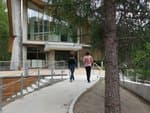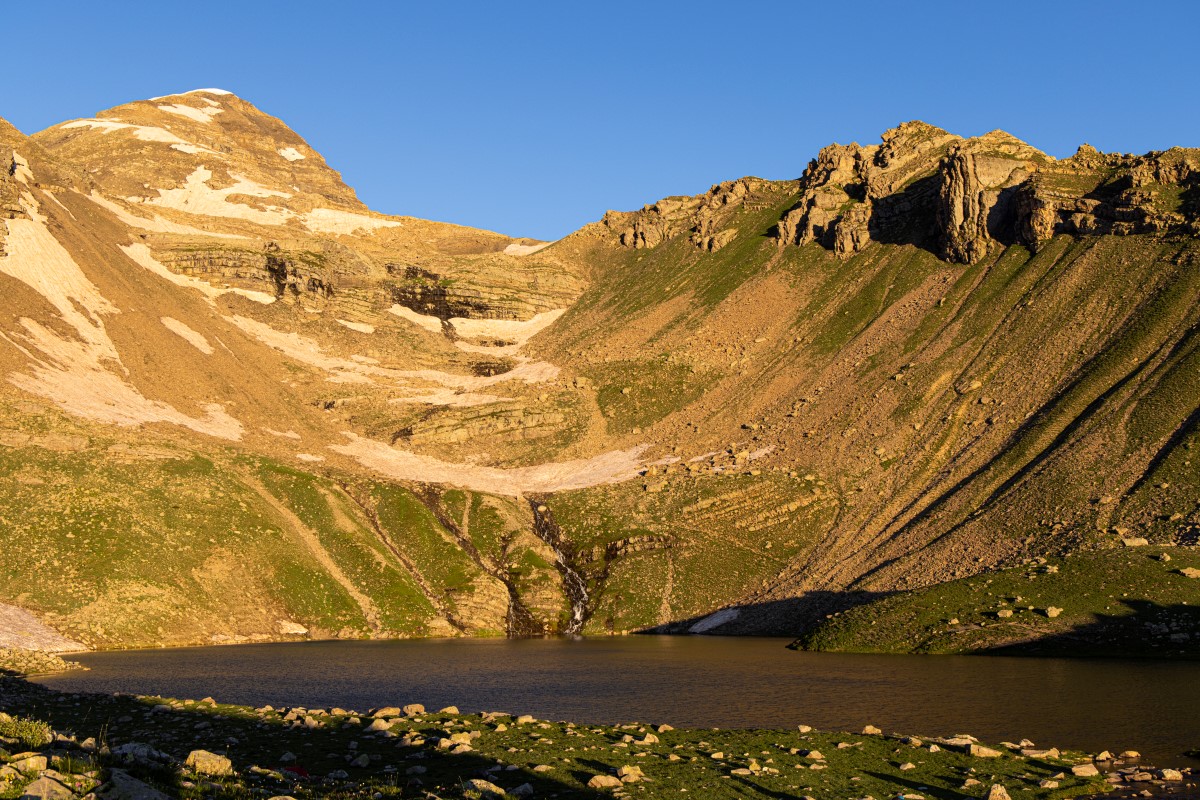
Lakes tour
One summer night, at around 4 a.m, we were woken by the throaty, insistent call of a rock ptarmigan. The small grassy plateau overlooking the valley where we had put up our bivouac was in its territory and it was letting us know.
Jean-Philippe Telmon et Blandine Delenatte, Wardens
Description
Park at the Cascades car park, at the end of the road to the bottom of the Fressinières valley. Take the path to the left, where you will find the entrance to the National Park, which is indicated by three explanatory panels (Leave the bridge that leads to the winter trail to the right). Follow the itinerary for the Lac Palluel.
- Cross the footbridge over the Oules stream and follow bends in the path along a large waterfall before crossing a zone of scree. As this 'summer' trail crosses an avalanche zone, it is not used in the winter. It has a gentle slope and is wide, enabling the inhabitants of Dormillouse to restock with the help of tracked wheelbarrows.
- At the following junction, stay on the track to the right (the one to the left leads to the Fangeas lake and the Terres Blanches pass). Follow the trail towards Dormillouse and before the footbridge, turn left following the signs for lac Faravel, lac Palluel, Fressinières pass.
- When you come to the next fork in the road, do not take the footpath to the right towards the Fressinières pass, but take the left hand one. Keep to the left and enter the larch forest. Above the forest, follow the footpath on the right towards Lac Palluel. From Lac Palluel, take the footpath on the right bank of the stream towards Lac Faravel.
- Continue on this path on a ledge over the valley and goes over the rocky ledge, an expanse of cairns before descending towards the Lac Faravel. In front of the lake go down the glacial cross-cliff and follow the footpath along the mountainside until you reach the crossing above the forest.
- Leaving the footpath towards La Palluel on the left, head back through the forest the way you came.
- Departure : Les cascades, Dormillouse (Fressinières)
- Towns crossed : Freissinières
Altimetric profile
Recommandations
The footpath that gives access to Dormillouse is only practicable in the summer. Reminder: no camping even near to the car park.
A flock is present on the pastures and "Patou" dogs ensure their protection. Avoid passing through the flock.
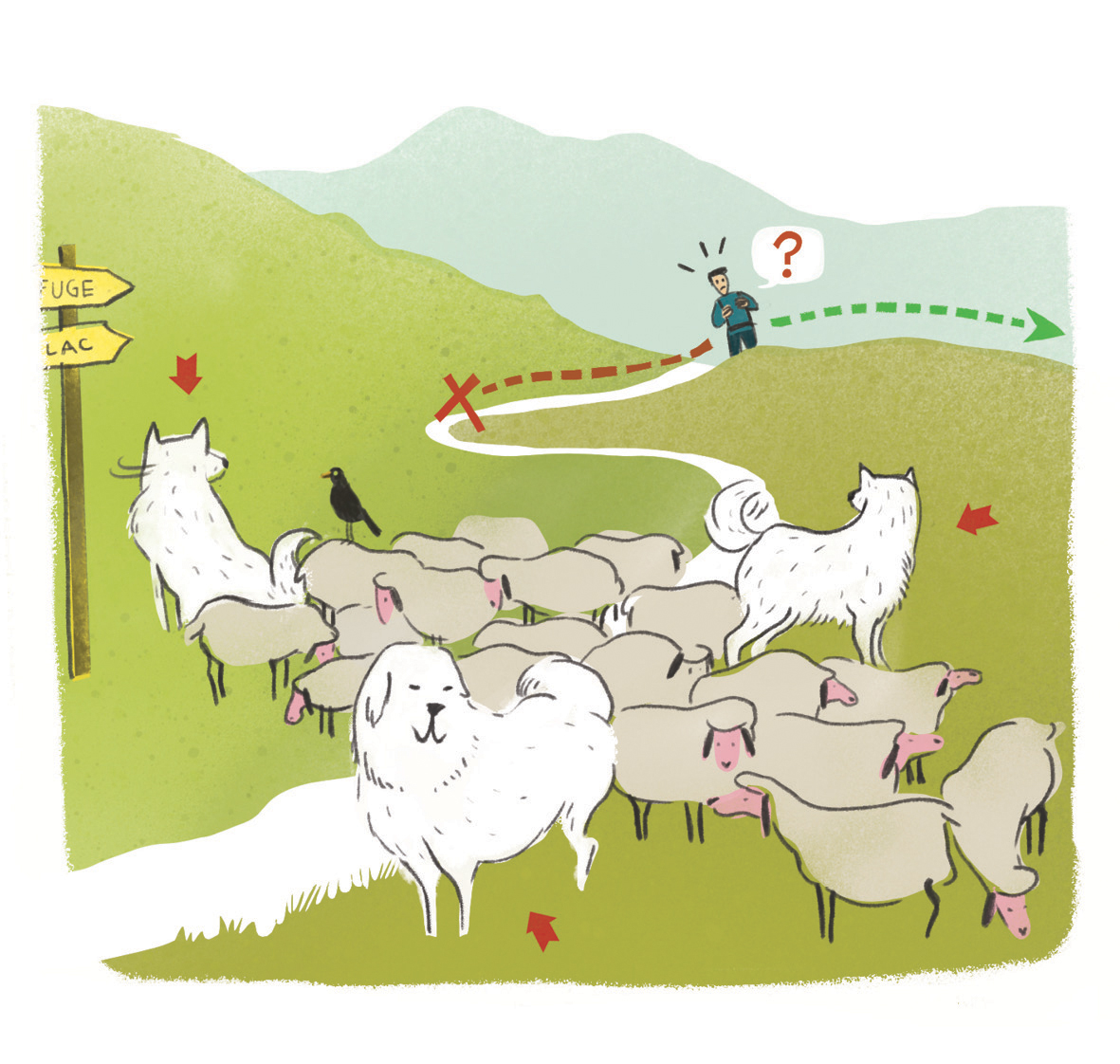 In mountain pastures, protection dogs are there to protect the herds from predators (wolves, etc.).
In mountain pastures, protection dogs are there to protect the herds from predators (wolves, etc.).
When I hike I adapt my behavior by going around the herd and pausing for the dog to identify me.
Find out more about the actions to adopt with the article "Protection dogs: a context and actions to adopt".
Tell us about your meeting by answering this survey.
Information desks
Vallouise Park house
, 05290 Vallouise
Information, documentation, models, exhibitions, screenings, product sales and works of the Park. Guided tours for school, reservation required. The new Park House opened in Vallouise since June 1, and offers visitors an interactive permanent exhibition inviting to explore the area and its heritage. A temporary exhibition space will allow a renewed offer. Finally, the device is completed by an audiovisual room to organize screenings and conferences Free admission. All animations of the Park are free unless otherwise stated.
Access and parking
From the main RN94 road north of la Roche de Rame, head towards Fressinières on the D38 then D38B roads. Go through Fressinières and follow the D238 road, which heads right up to the Cascades Car Park on the valley floor. This is the end of the road at the bottom of the Fressinières valley. In the snowy season, the road is closed.
Parking :
Sensitive areas
Golden eagle
- Impacted practices:
- Aerial, , Vertical
- Sensitivity periods:
- JanFebMarAprMayJunJulAug
- Contact:
- Parc National des Écrins
Julien Charron
julien.charron@ecrins-parcnational.fr
Black grouse - winter
- Impacted practices:
- , Land
- Sensitivity periods:
- JanFebMarAprDec
- Contact:
Black grouse - winter
- Impacted practices:
- , Land
- Sensitivity periods:
- JanFebMarAprDec
- Contact:
- Parc national des Ecrins - 0492402010
Black grouse - winter
- Impacted practices:
- , Land
- Sensitivity periods:
- JanFebMarAprDec
- Contact:
Black grouse - winter
- Impacted practices:
- , Land
- Sensitivity periods:
- JanFebMarAprDec
- Contact:
- Parc national des Ecrins - 0492402010
17 points of interest
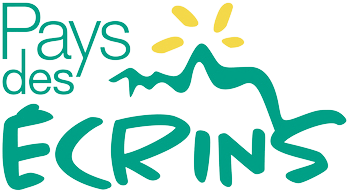
 Archaeologie
ArchaeologieMines
A few remains of the exploitation of the ancient mine are disseminated around the sector of Fangeas. These mines go back to the Middle Ages, a period during which we exploited silver-lead and copper. It was a small exploitation, no doubt associated with the mines at Fournel. The metal mined was used to mint feudal currency. The mine works are now filled in and flooded, which has enabled us to find well preserved remains: scaffolding, turned wooden bowls, the sole of a shoe. Archeologists have been excavating the mine for the last ten years they started by siphoning off the flood water from the tunnels. The mines are not accessible to the public and we have deliberately not communicated their exact location. For more information about this heritage, contact the mining museum at l'Argentière la Bessée.
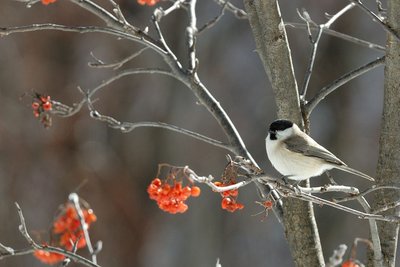
Mésange nonette - PNE - Coulon Mireille  Fauna
FaunaMarsh tit
This discreet tit is often confused with the mountain wollow tit. Distinguishing them is not easy. The bib of the marsh tit is smaller than that of the wollow tit; its wings are solid brown whereas they are slightly lighter for the wollow tit. Its crown is shinier. It is sedentary and visits the cooler deciduous forests, groves and garden providing there are trees with holes for nesting. It rarely goes higher than the mountain stage except for the most exposed sectors. With the arrival of spring, it does not come out of the old ash tree much. The best idea is to listen: the song and the call of the tit are very loud and tonic. Even then, it is not easy as it changes the song as if teasing the amateur ornithologist.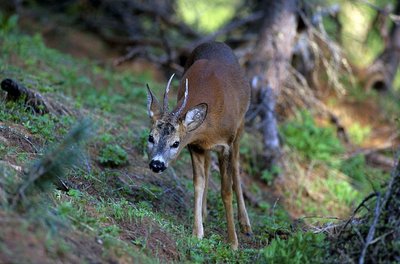
Chevreuil - PNE - Chevalier Robert  Fauna
FaunaEuropean roe deer
There are many roe deer around the village of Dormillouse. They hide in the bushes during the day, are at the edge of the prairies at sunrise and dusk and peacefully graze on the fresh grass. The white patch on the roe deer's rear is called the 'mirror'. The female's patch is heart-shaped and the male's is bean-shaped. The mirror is highly visible and increases in size due to the hairs standing on end as a warning to other deer, in the face of danger.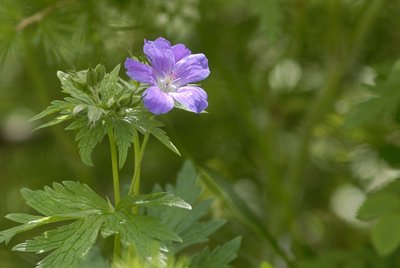
Géranium des bois - PNE - Coulon Mireille  Flora
FloraWoodland geranium
The bright colour of this woodland geranium might well catch your eye as you cross the forest of larch on the footpath leading up to the lakes. Later, the plant will be less visible but still interesting. When mature, the seeds are mounted by the 5 styles of the flower that look like a crane's beak. This long beak dries out over time, bends suddenly like a spring and acts as a catapult to scatter the seeds.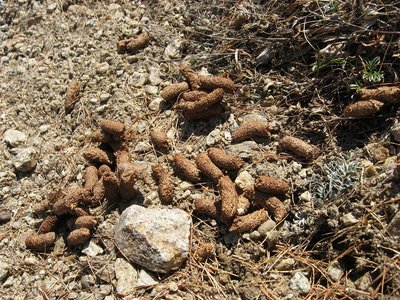
Crottier de tétras-lyre - PNE - Broquet Claire  Fauna
FaunaBlack Grouse
You will need to get up early if you want to see the Black Grouse in the summer. In France, the Black Grouse, or capercaillie as it is also known, can only be found in the Alps. The emblematic Black Grouse completes its biological cycle at the upper limit of the larch forest with springtime parades where the males coo and tackle each other, summer nesting supervised by the females and a winter lodging dug out of the snow. In winter, the Black Grouse is particularly sensitive to disturbance, such as an off-piste skier or snow-shoer passing by, as it cannot compensate for the energy lost should it need to flee its igloo in a hurry.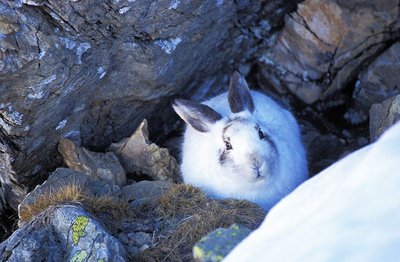
Lièvre variable à l'abri - PNE - Corail Marc  Fauna
FaunaMountain hare
Many mountain hares, or white hares have probably observed you...the opposite is unlikely. A true champion in camouflage, it is rare to see it but its round, dry droppings are proof of its presence. Another clue: low branches that are stripped of their bark that they have nibbled on throughout the winter. The white hare, which is brown in the summer and white in the winter, is naturally present in the Alps. It is smaller than the European hare, has a white tail and shorter ears, but leaves the same Y-shaped prints in the snow, which are due to the way it jumps to move (bringing its hind legs in front of its front legs).
Cabane Palluel - PNE - Meester Manuel  Pastoralism
PastoralismThe Palluel hut
The Palluel hut is built on a plateau and is used by a shepherd (please respect his dwelling). He watches over his flock on the Palluel and Chichin pastures that are rented to transhumants by the Fressinières council. The shepherds have special permission to keep dogs that are used for controlling or for protection within the National Park. The ban for others is to ensure peace and quiet for the flocks of sheep. Walkers are advised to avoid the flocks when possible and not to walk through them. Walk around the flock so as not to disturb it or cause the dog to act in a frightening manner. In its presence, stay calm, stop and talk calmly long enough for it to realise that you are an inoffensive human, do not stroke it and do not make any sudden movements.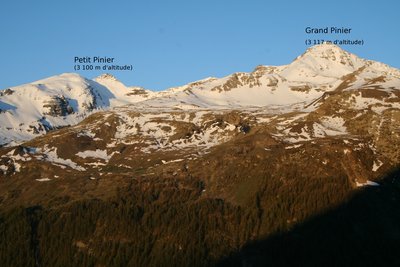
Grand et petit Pinier - PNE - Telmon Jean-Philippe  Panorama
PanoramaGrand Pinier
The Grand Pinier, or Brown Peak, is the backdrop to the Fressinières valley and at an altitude of 3117 m is its emblematic summit. Its rounded, rocky summit overlooks the Palluel lake and attracts experienced hikers in both summer and winter.
Grand et petit Pinier - PNE - Telmon Jean-Philippe  Panorama
PanoramaPetit Pinier
Just like the Grand Pinier, the Petit Pinier separates the Champsaur from the Fressinières valley. It culminates at 3100 m and shows off it pointed summit towards the south west, on the left of the Faravel lake.Just like the Grand Pinier, the Petit Pinier separates the Champsaur from the Fressinières valley. It culminates at 3100 m and shows off it pointed summit towards the south west, on the left of the Faravel lake.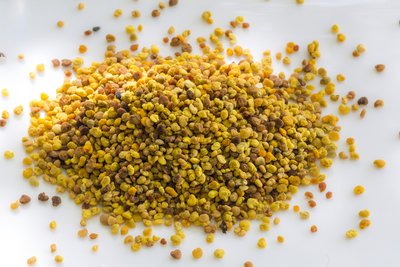
Pollens - Bertrand Bodin - Parc national des Ecrins  Flora
FloraPalynology?
Come il suo fratello maggiore, il Recent studies of the composition of pollen (palynology) and charcoal present in the soil of the area have revealed that larch, spruce, Swiss pine, birch and juniper were present in the Bronze Age and that the limit of the forest was much higher than today at an altitude of 2300 m.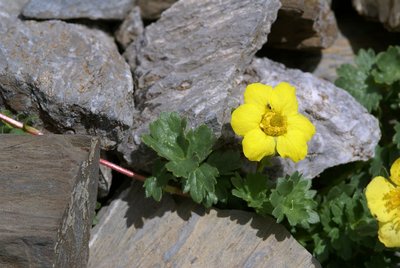
Benoîte rampante - PNE - Dentant Cédric  Flora
FloraCreeping avens
The creeping avens is a high altitude plant that grows in the rocky scree and spreads by means of long reddish stolons. Its fruit are long and hair-like forming a pretty, ginger, spiral bun. In this bun, each achene (fruit with only one seed) waits to be blown away in order to colonise another stony zone.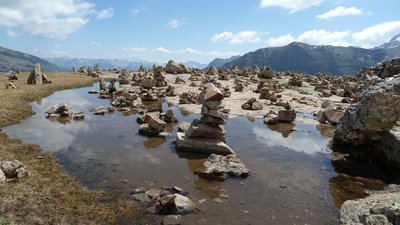
Le champ de cairns - PNE - Delenatte Blandine  Know-how
Know-howCairns field
A few years ago, below the Palluel Lake, a cairns field, that overlooks the valley, developed. Built litle by litlle by the walkers, each person has their own vision: land art, a simple game, or a surprising human trace in a protected area.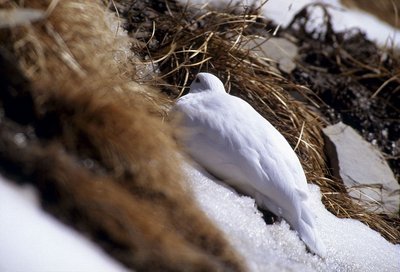
Lagopède alpin femelle - PNE - Chevalier Robert  Fauna
FaunaRock ptarmigan
The higher part of this circuit is the undisputed territory of the rock ptarmigan, also known as the white grouse. This bird is emblematic at high altitude and is among the 10 birds that need to be preserved as a priority within the heart of the National Park. Its future is of concern due to climate change, grazing in breeding areas, disturbance and it low level of reproduction.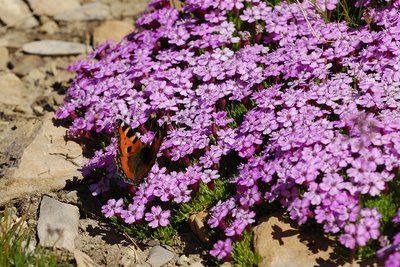
Petite tortue sur silène acaule - PNE - Coulon Mireille  Flora
FloraMoss campion
Around the Palluel and Fraval lakes, on the rocks that have been smoothed by time, the moss campion forms packed cushions that make it look like moss spiked with pink flowers. This ball-shaped growth enables it to resist the cold and desiccation by the wind. The stems grow in a tightly packed manner that means they only expose the smallest surface area in relation to the volume of space that they occupy, which limits leaf transpiration. In addition, the cushion traps the daytime heat, ensuring favourable conditions and temperatures at an altitude where the growth period is very short. Finally, dead leaves that accumulate at the heart of the cushion nourish solutions that are absorbed by the roots.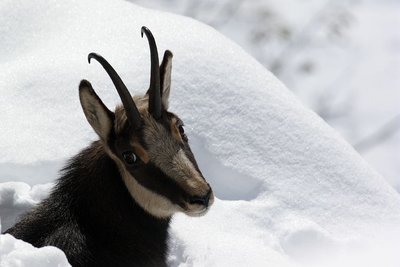
Chamois dans la neige - PNE - Telmon Jean-Philippe  Fauna
FaunaChamois
At dawn, it is not rare to see a chamois on the circuit. The the young play on the névés. The females and the "éterlou" (young male under one year old) like to stay in a large herd whereas the males are more solitary and only join the females for the mating season. The autumn is another special moment as it is mating season. However, the best way to observe chamois is to respect their tranquility by using binoculars or a telescope.
Omble chevalier - PNE - Dequest Pierre-Emmanuel  Fauna
FaunaArctic char
Each year, hundreds of young Arctic char are taken to the Palluel and Faravel lakes for rearing. This samonidae likes the bottom of the cold alpine lakes where it can find worms, molluscs and small shellfish. It is not shy and regularly comes to the surface, to enhance its menu with a few minnows.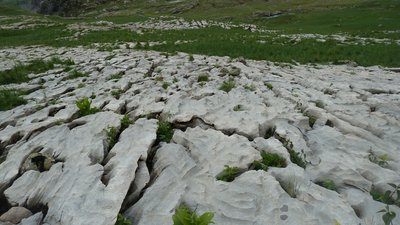
Lapiaz de Faravel - PNE - Delenatte Blandine  Glacier
GlacierGlacier reliefs
Signs of glaciers are visible in the landscape in the form of the Palluel and Faravel glacial lakes, the glacial cross cliff of Dormillouse, the U-shaped valley, glacial circuses, moraine deposits, erratics, as well as a few lapiaz that present narrow, parallel, sharp-peaked rivulets created by ice and melt water.
More information
Source

Report a problem or an error
If you have found an error on this page or if you have noticed any problems during your hike, please report them to us here:


